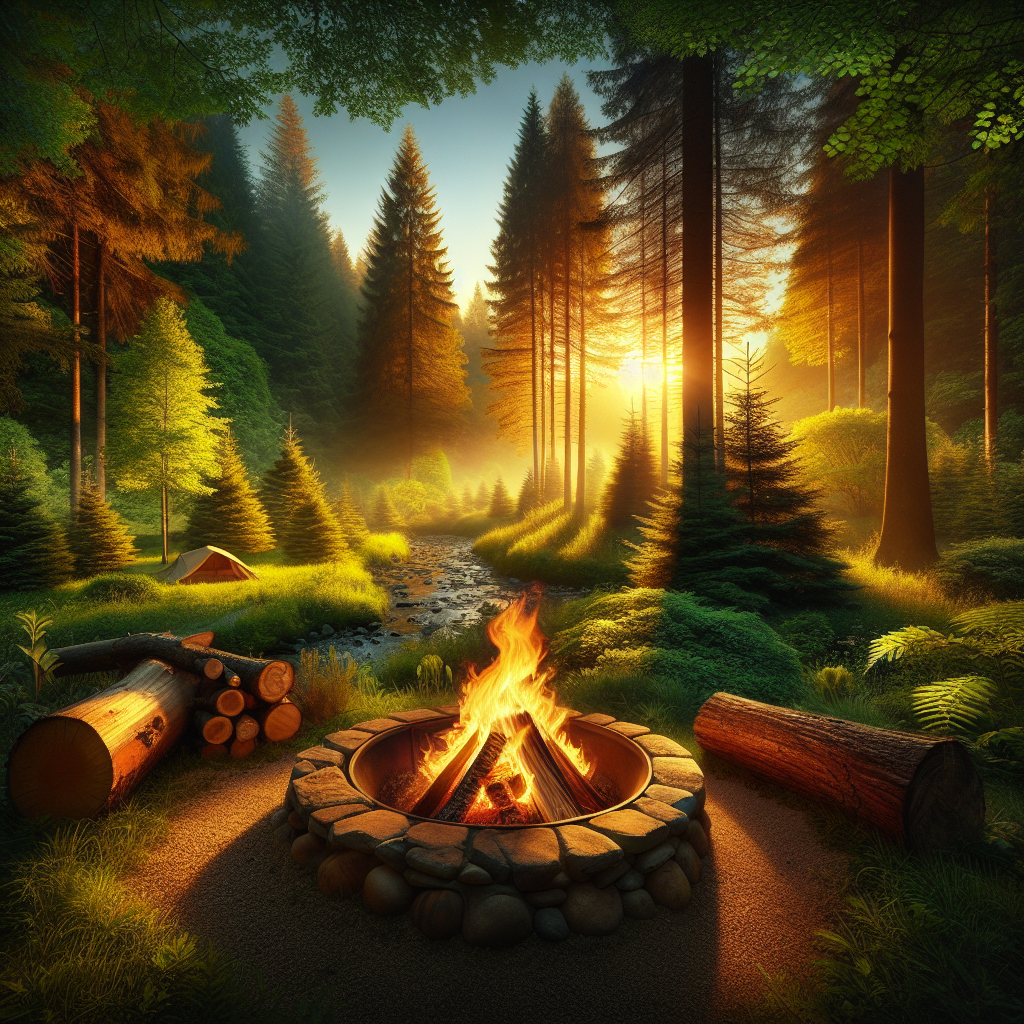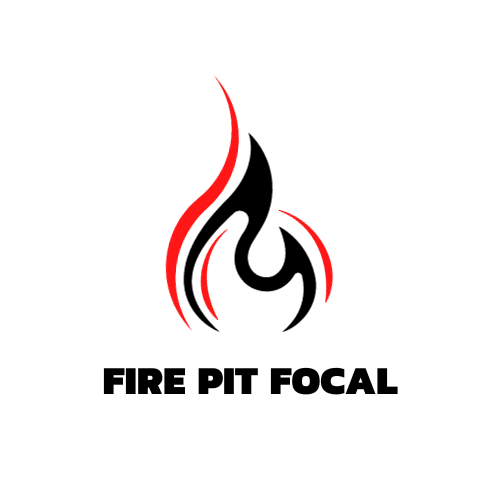Imagine yourself in a peaceful forested area, surrounded by the beauty of nature. The crackling sound of a wood-burning fire pit fills the air as you gather around with friends or family, enjoying the warmth and coziness it brings. But amidst this idyllic scene, it is important to ensure the safety of both yourself and the environment. In this article, we will guide you through the essential safety measures to follow when using a wood-burning fire pit in a forested area. So, sit back, relax, and let us help you enjoy your outdoor experience while keeping everyone safe.
Choosing the Right Location
Consider the Surroundings
When choosing a location for your wood-burning fire pit in a forested area, it is important to carefully consider the surroundings. Look for an area that is clear of overhanging branches or any other flammable materials. Additionally, make sure there are no dry or dead plants or vegetation nearby, as these can easily catch fire and pose a significant risk.
Find a Clear and Open Space
A clear and open space is essential for your wood-burning fire pit. Look for an area that is free of any obstructions or potential hazards. This will ensure that the fire pit is easily accessible and that there is enough space for everyone to gather around safely.
Check for Fire Restrictions
Before setting up your wood-burning fire pit in a forested area, it is absolutely crucial to check for any fire restrictions in place. Many forested areas have specific rules and regulations regarding open fires, and it is your responsibility to know and follow them. Contact the local fire department or park officials to determine if there are any restrictions or permits required for using a fire pit in the area.
Preparing the Site
Clear the Area of Debris
Before setting up your wood-burning fire pit, take the time to clear the area of any debris or flammable materials. This can include leaves, twigs, or any other potential fuel sources for the fire. By removing these items, you can significantly reduce the risk of an accidental fire spreading beyond your intended fire pit area.
Create a Fire Ring
Creating a fire ring is an important step in preparing the site for your wood-burning fire pit. A fire ring acts as a barrier, helping to contain the fire and prevent it from spreading. You can create a fire ring by using rocks or metal, ensuring that it is wide enough to safely contain the fire while still allowing for proper airflow.
Ensure Proper Ventilation
Proper ventilation is essential when using a wood-burning fire pit in a forested area. Make sure that the area where you set up your fire pit has adequate airflow to allow the fire to burn safely. Avoid setting up your fire pit in enclosed or tightly confined areas, as this can lead to a build-up of smoke and increase the risk of accidents.
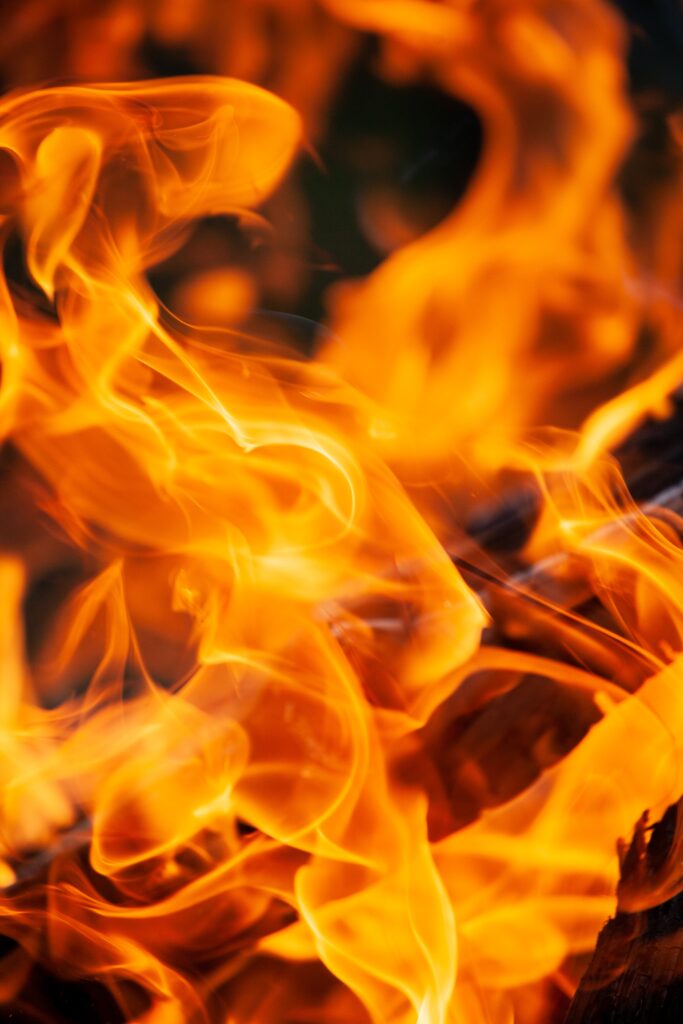
Gathering the Necessary Tools and Equipment
Fire Extinguishers
Having a fire extinguisher readily available is a must when using a wood-burning fire pit in a forested area. In the event of an unexpected fire, having a fire extinguisher nearby can help you quickly and effectively extinguish the flames before they spread. Make sure the fire extinguisher is suitable for use on all types of fires, including wood fires.
Water Sources
Having access to water sources near your wood-burning fire pit is essential for fire safety. Make sure there is a readily available water supply, such as a hose or buckets of water, that can be used to extinguish the fire if needed. It is also a good idea to wet the surrounding area before starting the fire to create a barrier against potential fire spread.
First Aid Kit
Accidents can happen, even when taking all necessary precautions. Having a well-stocked first aid kit on hand is important to ensure you are prepared to handle any minor injuries or burns that may occur. Make sure your first aid kit includes essentials such as bandages, antiseptic ointment, and burn cream.
Fire-starting Tools
To safely build and manage your wood-burning fire pit, ensure you have the necessary fire-starting tools. This can include matches or a lighter, as well as kindling and dry firewood. Avoid using accelerants or flammable liquids to start the fire, as this can lead to an uncontrolled and dangerous situation.
Building and Managing the Fire
Use Small and Dry Wood
When building a fire in your wood-burning fire pit, it is important to use small and dry wood. This will make it easier to start and maintain a controlled fire. Wet or green wood can produce excessive smoke and cause the fire to burn unpredictably, increasing the risk of accidents.
Keep a Safe Distance
Maintaining a safe distance from the fire is crucial to prevent burns or accidents. Avoid leaning directly over the fire or sitting too close to it, as sparks and embers can jump out unexpectedly. It is recommended to establish a safe perimeter around the fire pit and ensure everyone understands the importance of not crossing it.
Monitor the Fire Constantly
Never leave your wood-burning fire pit unattended. It is essential to constantly monitor the fire to ensure it remains under control. Keep a close eye on the flames and embers and be ready to take immediate action if necessary. This includes having a fire extinguisher or water source nearby in case of emergencies.
Avoid Overloading the Pit
A common mistake when using a wood-burning fire pit is overloading it with too much wood. Overloading can lead to a large, unwieldy fire that is difficult to control and increases the risk of accidents. Only add enough wood to maintain a small to medium-sized fire, and avoid stacking wood too high.
Properly Extinguish the Fire
When you are finished using your wood-burning fire pit, it is crucial to properly extinguish the fire. Use water or sand to completely extinguish the flames, making sure all embers are cold to the touch. Never leave a fire pit smoldering or unattended, as this can lead to a potential fire hazard.
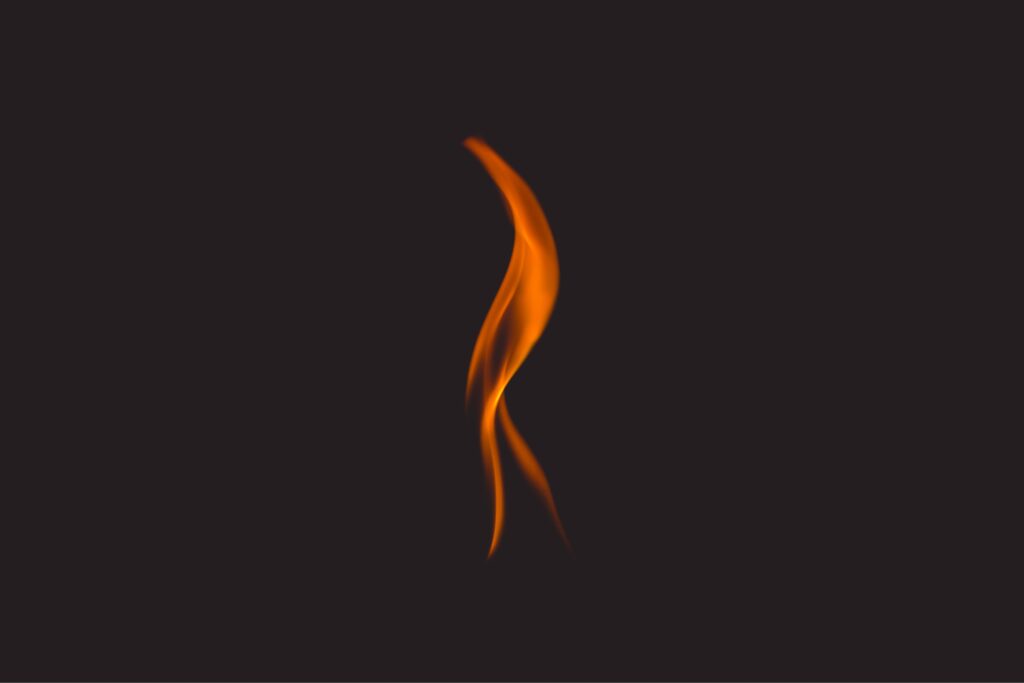
Respecting Surrounding Nature and Wildlife
Avoid Disturbing Flora and Fauna
When using a wood-burning fire pit in a forested area, it is important to respect the surrounding flora and fauna. Avoid damaging or disturbing plants, trees, or natural habitats while setting up or using the fire pit. Be mindful of any nesting birds or animal dens nearby, and do not disturb their habitats.
Minimize Noise and Disruptions
Keep noise levels to a minimum when using a wood-burning fire pit in a forested area. Loud noises can startle or disturb wildlife, particularly during nesting or breeding seasons. Minimize disruptions by speaking softly and refraining from playing loud music or engaging in rowdy activities that can disturb the peacefulness of the natural environment.
Dispose of Ashes and Trash Properly
After using your wood-burning fire pit, make sure to properly dispose of any ashes or trash. Allow the ashes to cool completely, and then properly dispose of them in a designated ash disposal container or area. Do not scatter ashes or leave any trash behind, as this can be harmful to the environment and wildlife.
Educating Yourself on Fire Safety
Know Local Fire Regulations
To ensure the safe and responsible use of a wood-burning fire pit in a forested area, it is important to familiarize yourself with local fire regulations. Different areas may have specific rules, restrictions, or permits in place, and it is your responsibility to comply with them. Contact local authorities or park officials to obtain accurate and up-to-date information before using your fire pit.
Understand Fire Behavior
Educate yourself on the behavior of fire in a forested area. Understand how fire spreads, what factors contribute to its intensity and speed, and how to best manage and control a fire. This knowledge will help you make informed decisions and take appropriate actions to minimize the risk of accidents or fire-related incidents.
Learn Basic First Aid Skills
In addition to fire safety knowledge, it is beneficial to learn basic first aid skills. Knowing how to respond to common injuries or burns that may occur when using a wood-burning fire pit can make a significant difference in the outcome. Consider taking a first aid course or familiarizing yourself with basic first aid procedures to ensure you are prepared for any emergencies.
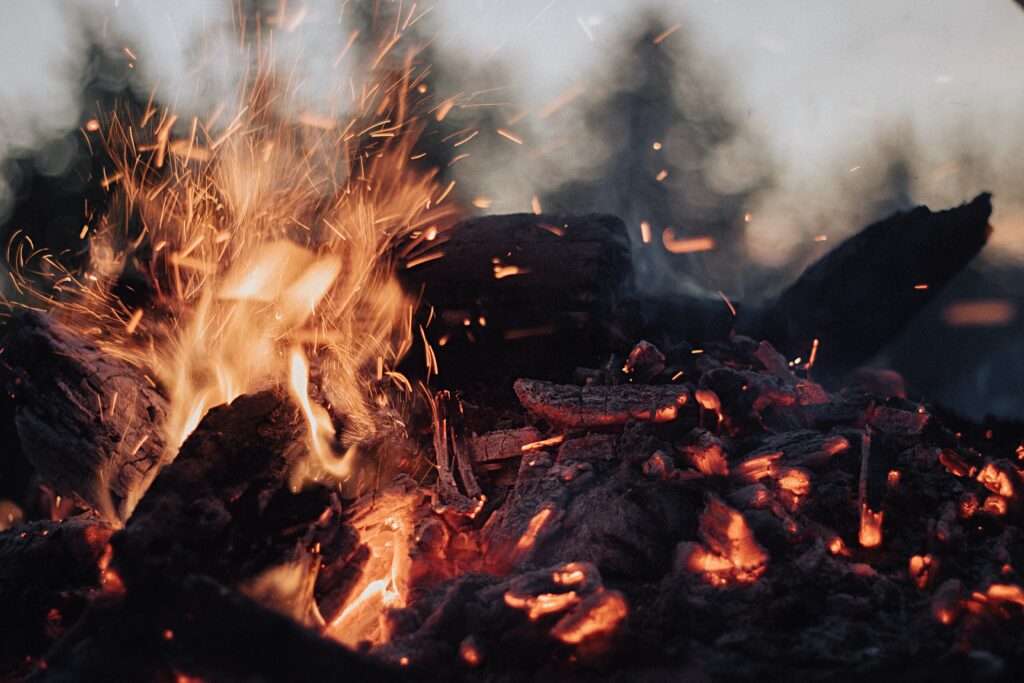
Weather Considerations
Check Weather Conditions
Before using your wood-burning fire pit in a forested area, it is vital to check the weather conditions. Avoid using the fire pit during periods of high winds or dry conditions, as this increases the risk of the fire spreading uncontrollably. Be aware of any weather forecasts or warnings that may affect fire safety and adjust your plans accordingly.
Avoid Windy Days
Strong winds can quickly turn a small fire into a dangerous inferno. When using a wood-burning fire pit in a forested area, it is essential to avoid windy days. Even a moderate breeze can cause embers to travel far distances, igniting nearby dry vegetation and potentially leading to a catastrophic fire. Choose calm days for your fire pit activities to ensure the safety of both yourself and the surrounding environment.
Prevent Fires from Spreading
In forested areas, the risk of fire spreading is a major concern. To prevent fires from spreading, ensure that your wood-burning fire pit is set up in an area that is clear of flammable materials, such as dry grass or fallen leaves. Maintain a safe distance from any vegetation, and be prepared to take immediate action if the fire begins to spread beyond your control.
Keeping a Safe Distance from Structures
Maintain Adequate Clearance
Always maintain adequate clearance between your wood-burning fire pit and any nearby structures. This includes buildings, tents, trees, or any other potentially flammable objects. A safe distance of at least 10 feet is generally recommended, but it is essential to follow any specific guidelines or regulations in the area you are in.
Avoid Overhanging Branches
When selecting a location for your wood-burning fire pit, be mindful of any overhanging branches. These branches can easily catch fire and pose a significant risk. Choose a location that is clear of any branches hanging directly over the fire pit, ensuring that there is no chance of sparks or embers igniting them.
Pay Attention to Local Structures
In a forested area, there may be local structures such as picnic shelters, cabins, or signage nearby. Pay attention to these structures and ensure you maintain a safe distance from them when using your wood-burning fire pit. Be respectful of the surroundings and do not place the fire pit in a location that could potentially damage or pose a risk to these structures.
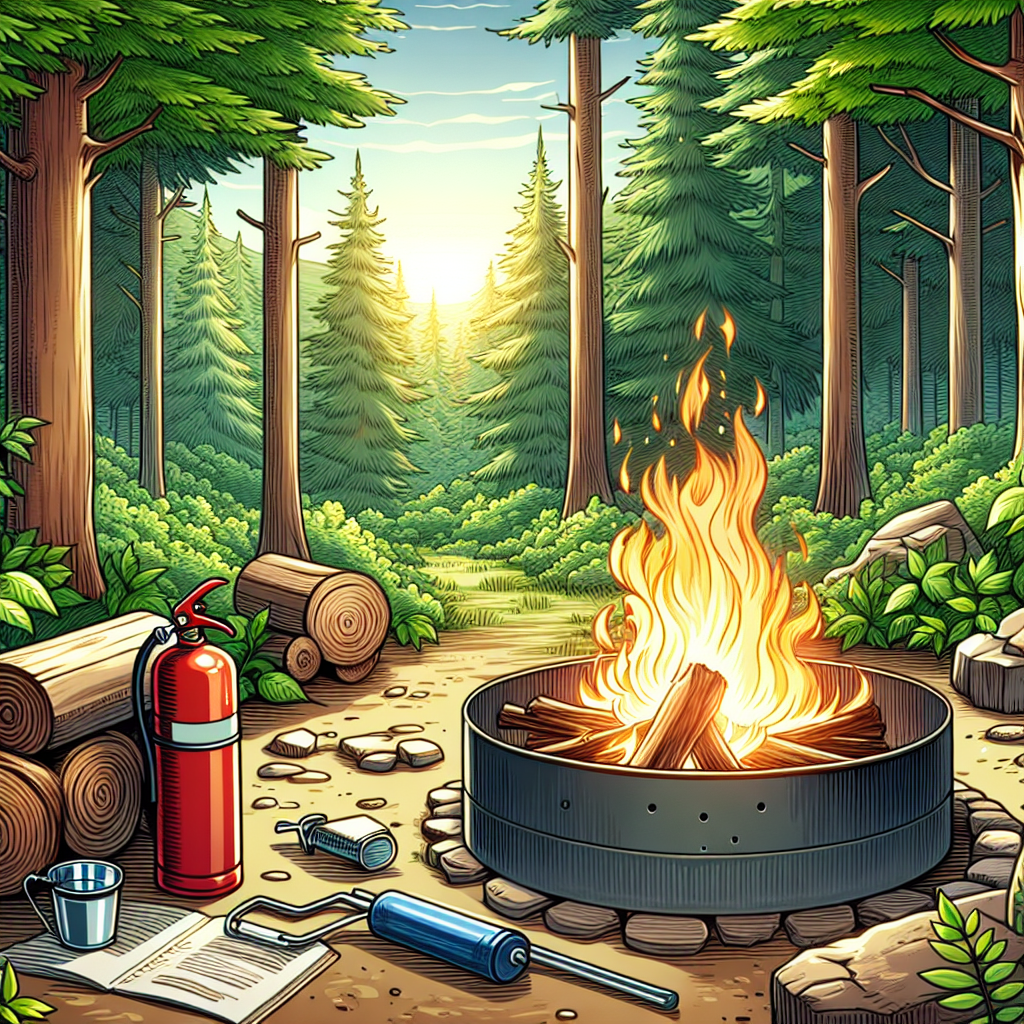
Creating a Buffer Zone
Clear Vegetation around the Pit
To create a buffer zone around your wood-burning fire pit, clear any vegetation from the immediate area. Remove any grass, leaves, or other flammable materials that are within a safe distance from the fire pit. This will reduce the risk of any accidental fires spreading and help contain the fire within the designated area.
Use Rocks or Metal Fire Pits
Using rocks or a metal fire pit can reduce the risk of fire spreading in a forested area. By containing the fire within a designated space, such as a fire ring made of rocks or a metal fire pit, you can help prevent accidental fires from spreading beyond your control. These materials are less likely to ignite and provide a safer option for containing the fire.
Maintain a Safe Distance
Maintaining a safe distance is crucial when creating a buffer zone around your wood-burning fire pit. Ensure that there is enough space between the fire pit and any vegetation or other potential fuel sources. This will help prevent sparks or embers from igniting nearby flammable materials, reducing the risk of accidental fires and ensuring the safety of the surrounding forested area.
Campfire Etiquette
Respect Campfire Bans
One of the most important rules of campfire etiquette is to always respect campfire bans. These bans are put in place for a reason, usually due to dry and potentially dangerous conditions. It is crucial to follow any bans or restrictions and refrain from using your wood-burning fire pit during these times. Respect the regulations and do your part to prevent wildfires and preserve the natural environment.
Keep Fires Small and Controlled
When using a wood-burning fire pit in a forested area, it is essential to keep the fires small and controlled. This not only helps to minimize the risk of accidents but also reduces the impact on the surrounding environment. Avoid building excessively large fires that may be difficult to manage and pose a higher risk of spreading.
Do Not Burn Non-Permitted Materials
It is important to understand what materials are safe to burn in your wood-burning fire pit and what should be avoided. Never burn non-permitted materials such as treated or painted wood, plastics, or trash. These materials can release harmful toxins or cause the fire to burn at higher temperatures, increasing the risk of accidents and posing a threat to the environment.
By following these safety measures, you can enjoy the warmth and ambiance of a wood-burning fire pit in a forested area while minimizing the risk of accidents and protecting the natural environment. Remember to always practice responsible fire safety and educate yourself on local regulations and guidelines before using a wood-burning fire pit. With careful planning and consideration, you can create a safe and enjoyable experience for yourself and others in the beauty of the outdoors.
